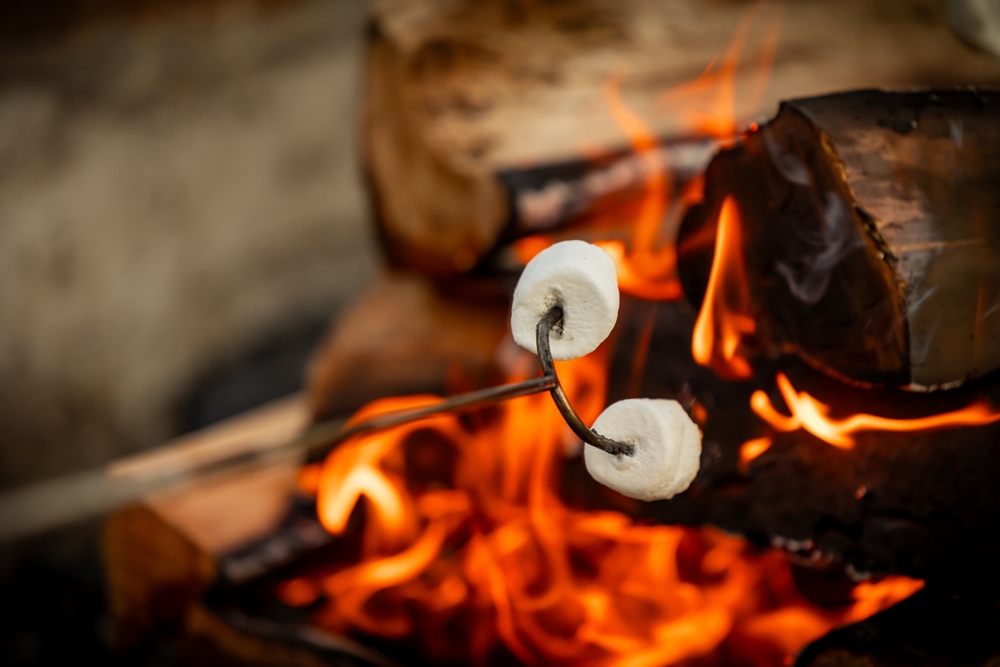The Ultimate Guide to Building the Perfect Campfire for Cooking S’mores

There’s something timeless about sitting around a glowing campfire, the stars above, and a stick of gooey, melting marshmallows in your hand. Cooking s’mores over a campfire isn’t just a fun activity—it’s a cherished ritual for campers, families, and outdoor lovers alike. But as simple as it may seem, building the perfect campfire for s’mores takes a little more finesse than tossing a few logs on the ground and striking a match. Whether you’re deep in the woods or in your own backyard, this guide will walk you through every step of creating the ideal fire to toast the ultimate s’more.
Choosing the Right Spot and Preparing Your Fire Ring
Before you light anything, location is everything. You’ll want to choose a safe, clear space that’s at least 15 feet away from tents, trees, or anything flammable. Most campgrounds will provide designated fire rings or pits—use them if they’re available. If you’re building your own, arrange a circle of rocks wide enough to contain your fire and prevent embers from blowing into the surroundings.
Clear the area of any dry leaves, pine needles, or other flammable debris. The base of your fire ring should ideally be sand, gravel, or bare soil. This preparation is not just about function; it’s about safety. A poorly placed fire can lead to dangerous wildfires or unexpected flare-ups. Keep a bucket of water or a shovel nearby at all times—you’ll need it both during and after your fire.
Selecting the Best Firewood and Structure
The type of firewood you choose can make or break your s’mores experience. Your best bet is a mix of three types: tinder, kindling, and hardwood. Tinder, such as dry leaves, bark, or paper, is what you’ll light first. Kindling—sticks and twigs about the thickness of a pencil—catches from the tinder and helps ignite your larger logs. Finally, hardwoods like oak, hickory, or maple are your long-burning champions that produce steady heat and glowing embers, perfect for roasting.
Avoid using softwoods like pine or fir for cooking. These types of wood burn fast, create lots of smoke, and can release sap that pops and sends embers flying. Worse, they can taint your marshmallows with a chemical taste that ruins the sweetness of your s’more. Well-seasoned hardwood burns cleaner and slower, giving you more control over your cooking.
For structure, go with the tried-and-true log cabin method. Start with two logs placed parallel to each other, then lay two more logs on top in a criss-cross pattern. Fill the center with tinder and kindling. This configuration provides airflow and a stable base, ensuring your fire builds gradually without collapsing. Once the flames catch, gradually add more firewood to keep a steady burn, but avoid piling it on too quickly.
Timing Your Fire for Optimal S’mores Roasting
Here’s the secret most first-time campers don’t know: the best time to roast s’mores isn’t when the flames are high. High flames are erratic, uneven, and scorch your marshmallows instead of roasting them. What you want are glowing, radiant embers—low, hot, and steady. These embers provide even heat and let you control your marshmallow’s golden-brown finish without setting it ablaze.
It usually takes about 30 to 45 minutes from the time you light your fire to reach the “s’mores-ready” stage. During this time, you can sit back and enjoy the fire’s crackle and warmth. Keep tending to the logs to ensure they’re burning down evenly. Don’t be tempted to rush the process. A perfectly roasted marshmallow—soft and gooey on the inside, with a gently caramelized outside—demands patience and a good ember bed.
When the logs have broken down into glowing chunks and the fire’s intensity has mellowed, you’re ready. Push a few embers to the side of the main fire so kids or first-timers can roast safely without leaning directly into the heat. This control zone ensures everyone enjoys the experience without singed eyebrows.
Crafting the Perfect S’mores Setup
While the fire preps itself, turn your attention to the stars of the show: the ingredients. The classic trio—graham crackers, marshmallows, and milk chocolate—works beautifully, but don’t be afraid to experiment with flavors. Dark chocolate offers a richer bite, while flavored marshmallows (think caramel or vanilla swirl) add a twist. Some even substitute peanut butter cups or cookies for a gourmet touch.
Have everything ready and organized before roasting begins. You don’t want to be scrambling for a cracker while your marshmallow threatens to slide off your stick. Wooden roasting sticks are fine, but if you camp often, investing in telescoping metal skewers with heat-safe handles offers better control and safety. Make sure your marshmallow is firmly secured on the skewer, rotate slowly over the embers, and never place it directly into the flame.
Once golden and puffed, sandwich the marshmallow and chocolate between two halves of graham cracker. The heat from the marshmallow will start to melt the chocolate, making for that irresistibly gooey bite. Wait a few seconds before eating—it’ll be hot, sticky, and absolutely worth it.
For groups, consider setting up a “s’mores bar” with a variety of options. Mini chocolates, white chocolate, fruit preserves, or thin slices of banana add a personalized touch. Not only does this make the process more fun, but it elevates your campfire into a memorable culinary event.
Safety and Cleanup: Leaving No Trace
A successful campfire doesn’t end with the last s’more—it ends with a safe, responsible cleanup. Let the fire die down naturally while enjoying your last few treats. Stir the ashes gently to ensure everything is cooling evenly. Once the flames have subsided and only coals remain, pour water over the fire slowly and steadily. Listen for the hissing sound as steam rises, and stir again to expose hot pockets. Repeat until the area is cool to the touch. If water isn’t available, use dirt or sand, but never just walk away from a smoldering pit.
Dispose of any leftover food wrappers or trash properly. Animals can smell food from miles away, and leaving remnants can not only endanger wildlife but attract unwelcome visitors to your campsite. Respect the land and the people who come after you by restoring your campfire site to its natural state.
Campfire cooking, especially for something as nostalgic and joyful as s’mores, should never come at the cost of the environment or safety. Mastering the firewood selection, building a proper campfire, and cleaning up thoroughly ensures the tradition continues for generations to come.
Conclusion
With the right approach, building a campfire for cooking s’mores becomes more than just a means to a tasty end—it becomes a skill, a ritual, and a moment to cherish. The magic lies in the glow of the embers, the laughter around the flames, and the first sweet, sticky bite of a perfectly roasted marshmallow. So next time you head out under the stars, you’ll be ready to build not just a fire, but a memory.
Need Firewood in Lubbock, TX?
Here at Freedom Firewood in Lubbock, Texas, we take pride in offering a diverse selection of premium, fully seasoned, and ready-to-burn firewood to meet all your needs. Whether you’re looking for oak, hickory, mesquite, pecan, New Mexico pine, pinion pine, or a mixed variety, we have you covered. From one cord to a quarter cord, apartment stacks, and even convenient pre-bagged firewood, we provide the right quantity for you. Plus, with our local and long-distance delivery services, getting your firewood has never been easier. Contact us today to experience the warmth and quality of Freedom Firewood!
